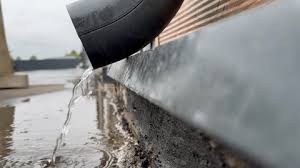DIY Guide to Water Damage Restoration
June 4, 2025
Protect your home and prevent mold with these step-by-step actions.

1. Ensure Safety First
- ⚡ Turn off electricity in the affected area to avoid electrocution.
- 🧤 Wear gloves, boots, and a mask to protect yourself from contaminants.
- 🚱 Shut off the main water supply if the leak is still active.
2. Stop the Water Source
- Find the source of the leak (pipe, appliance, roof, etc.) and repair or seal it temporarily.
- For severe leaks or damage, call a professional plumber or roofer.
3. Document the Damage
- 📸 Take photos and videos of all damage before cleanup.
- 📝 Note damaged items, materials, and the extent of water saturation.
- This is vital for insurance claims.
4. Remove Standing Water
- Use a wet/dry vacuum, mop, or pump to remove water.
- Buckets and towels can help with small areas.
- Move quickly-mold can grow within 24-48 hours.
5. Dry Out the Area
- Open windows and doors to ventilate.
- Set up fans and dehumidifiers to speed up drying.
- Remove baseboards and drill small holes to allow wall cavities to dry if needed.
- Pull up soaked carpet and padding if they can’t be fully dried.
6. Salvage What You Can
- Move furniture and valuables to a dry area.
- Wipe down wood furniture and place on blocks to dry.
- Toss porous items like soaked drywall, insulation, mattresses, or particle board if heavily saturated.
7. Clean & Disinfect
- Clean all affected surfaces with soap and water.
- Disinfect with a bleach solution (1 cup bleach to 1 gallon water) or EPA-registered disinfectant.
- Watch for signs of mold growth-black, green, or musty-smelling spots.
8. Inspect for Structural Damage
- Check for warped floors, cracked drywall, or loose tiles.
- If you notice bulging walls, warped flooring, or musty smells, consider calling in a restoration specialist.
9. Prevent Future Problems
- Seal cracks and leaks around doors, windows, and foundations.
- Install a sump pump and water alarm.
- Maintain gutters and downspouts.
🔄 When to Call a Pro
- Damage covers more than one room
- Water is from a contaminated source (like sewage)
- Mold is visible or suspected
- You’re unsure how to handle cleanup safely
Mold can start growing within 24-48 hours after water damage, so quick action is key. Here’s how to avoid mold after water damage:
✅ 1. Act Fast
- Start cleanup within 24 hours if possible.
- Remove standing water immediately with a wet/dry vacuum or pump.
💨 2. Dry Everything Thoroughly
- Use fans, dehumidifiers, and open windows to dry the area.
- Focus on:
- Carpets and padding
- Walls and baseboards
- Wood flooring and subfloor
- Furniture and soft goods
- Remove baseboards to help wall cavities dry out.
🔨 3. Remove What Can’t Be Dried
- Toss porous items that hold moisture:
- Wet drywall
- Insulation
- Mattresses
- Carpet padding
- Cut out drywall at least 12 inches above the water line.
🧼 4. Clean & Disinfect
- Wash surfaces with soap and water first.
- Disinfect with a bleach solution (1 cup bleach to 1 gallon of water) or EPA-registered mold killer.
- Don’t mix bleach with ammonia or other cleaners.
🕵️♀️ 5. Check for Hidden Moisture
- Use a moisture meter or have a pro inspect behind walls, under flooring, etc.
- If areas still feel damp after 48 hours, mold is likely to follow.
🧯 6. Prevent Future Mold
- Use mold-resistant drywall in repair areas.
- Install a dehumidifier in basements or high-moisture areas.
- Keep indoor humidity below 50%.
- Ensure proper ventilation in bathrooms, kitchens, laundry rooms.